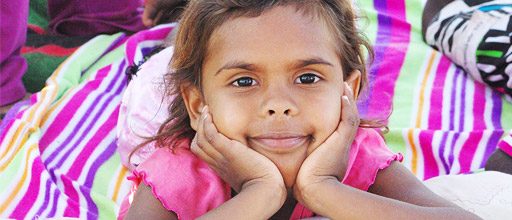
Culturally appropriate - why it matters for our kids
When you hear the word ‘granny’, what image does your mind conjure up? A gentle old lady with shrivelled hands and kind eyes behind rimless glasses, a knitted shawl around her shoulders? Me, I see the chubby faces and soulful eyes of my beautiful grandchildren. You see, ‘granny’ is Aboriginal English for ‘grandchild’.
As an example of Aboriginal English, ‘granny’ is relatively recent - as any linguist will tell you, language is evolving – yet its growing use by Aboriginal grandparents in various parts of the country speaks uniquely of identity. As an Aboriginal researcher, these dynamic oral practices are fascinating and important. Aboriginal people’s peculiar use of English is part of what has kept culture going throughout British settlement and occupation. The brutal policies of Australia’s early colonisation of Aboriginal lands included the prohibition to speak our native languages. Through the generations, we found ways to communicate under the imperialist eye of surveillance.
It’s seemingly small things like these that signal continuation of culture, a type of code born of resistance and resilience amid dominant Australian society. Far from the popularly held belief as proof of loss of culture, Aboriginal English signifies it. And it has become more significant in this post-colonialist age hungry for Indigenous knowledge. The passing on of our knowledge is specifically and culturally for our younger generations, yet increasingly this place is being taken by researchers.
The forcible removal of Aboriginal children from their families was predicated on notions of biological racial purity to ‘absorb the half-castes into the white population’– a devastating intergenerational policy based on what today would be dismissed as junk science. ‘Kids in Culture — Strong, Proud, Resilient’ is the theme for 2014 National Aboriginal and Islander Children’s Day, set by peak body the Secretariat National Aboriginal and Islander Child Care, to celebrate the importance that connection to culture plays in a child’s safety, development and wellbeing.
Yet, in this so-called enlightened age, SNAICC reports that 17 years after the Bringing Them Home inquiry child removal has increased by a staggering 400 per cent. Although our children make up less than 5% of the total Australian child population, they account for over one third of kids in out of home care.
Everywhere, Aboriginal and Torres Strait Islander children outstrip the number of non-Indigenous children being removed from their families. Nationally, they are ten times more likely than a non-Aboriginal child to be placed in out of home care - in Victoria it is more than 15 times, among the highest in the world.
Clearly, current measures are not working, leading SNAICC to assert that promotion, understanding and respect for Indigenous rights and culture must be at the forefront of solutions. Attending to this situation must include culturally-appropriate measures that ensure Indigenous people participate in decision-making, and build capacity in out-of-home care agencies, planning and support for our children in care: in short, a culturally competent, child‐centred and family focused services system.
But talk of cultural appropriateness is exhausting, confusing and often out of reach for the average person. What chance the hapless worker in such highly charged environments as child protection? What does cultural appropriateness mean and why does it matter?
In the best research organisations, the priority is now on programs that engage Indigenous people, build capacity, are evidently rigorous and ultimately deliver. The Marulu study conducted in Western Australia’s Fitzroy Valley community is the first high quality foetal alcohol spectrum disorder prevalence study of children in an Australian Indigenous community. Understanding the factors and extent of the problem required the research team – which included paediatricians, physiotherapists, occupational therapists, speech therapists, child psychologists, audiologists and ophthalmologists – to ask parents and carers about their child’s exposure to alcohol in pregnancy and physical assessment of its present effects.
Such singular work on such an exceptionally sensitive subject demands distinctive and discrete awareness of cultural appropriateness. This study was most assuredly not conducted exclusively by qualified and well-meaning biomedical researchers. Rather, the Marulu project took place within the community, led by two local, non-scientist Aboriginal women. The study produced invaluable data that will inform better practice for women and children across all strata of Australian society.
Good research that is ultimately useful and sustainable is based on sound evidence with culturally appropriate processes. Add focus on community-led programs, we will be able to amass the information that we need to battle stagnant practices in statutory child protection services across the country that are increasingly removing our children from our care.
So this year on August 4, celebrate our children’s connection to their unique culture. It is crucial to supporting vulnerable Aboriginal and Torres Strait Islander children and families to prevent abuse and neglect. Assuming that you have all that’s needed for the best care options and risks for kids in our communities is a mistake. Because, how would you know if to you ‘granny’ is an old lady?
Share in celebrating our kids, visit: www.aboriginalchildrensday.com.au or www.snaicc.org.au

